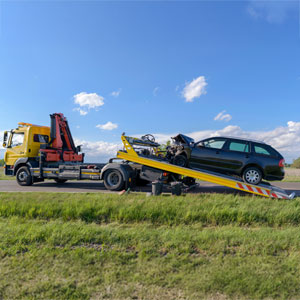Jury Instruction On One Accident or Two Separate Accidents
Car AccidentsIn the case of Flania Belt v. USAA Casualty Insurance Company, Case Number 4D20-339 (Fla. 4th DCA March 10, 2021), Florida’s Fourth DCA held that it was not error for the trial judge to instruct the jury that multiple impacts can constitute one accident if there is one proximate, continuing cause of injury.
Facts of the Case
The plaintiff in this case was initially struck by a pickup truck on I-95 that caused her to spin. This pickup truck never stopped and left the scene of the accident. This pickup truck was a hit and run driver and, hence, was an uninsured vehicle for purposes of UM coverage on the plaintiff’s auto policy.
After spinning, a second collision occurred with a vehicle that did not have insurance. This second driver qualifies as an uninsured vehicle by definition under the plaintiff’s auto policy as well due to not having insurance.
However, the big question in this case is whether there was one accident or two. If there were two accidents, then two UM limits would apply to the plaintiff’s case and there would be double the insurance. So let’s dive in deeper.
The plaintiff sued USAA alleging two accidents, one for the hit and run driver and a second for the uninsured driver. A settlement was reached for the UM policy limits due to the actions of the hit and run driver. Thereafter, the case went to trial against USAA for the uninsured driver and USAA defended by saying that there was one accident (knowing good and well that they had already paid their UM limits for the actions of the hit and run driver).
If USAA were to prevail on that issue, it would mean that USAA had no obligation beyond the settlement which had already been made. Of course, the case went to trial and the jury found that there was one accident and not two. The plaintiff appealed.
Case on Appeal and Jury Instruction at Issue
The issue complained of whether the trial judge should have given the following instruction to the jury:
The first issue you are asked to answer is whether or not the two impacts amounted to one or two accidents. Multiple impacts will be considered one accident if there is but one proximate, uninterrupted, and continuing cause of injury. In answering that question, you must consider the following factors:
The time between each impact, the space or distance between each impact and whether plaintiff regained control of her vehicle before the second impact.
If you find that both impacts amounted to one accident, you will be done and need not decide any other issue.
If you find that both impacts amounted to two accidents, you will have to decide whether [the uninsured motorist] was negligent in the operation of his motor vehicle, and if so, whether that negligence was a contributing legal cause to plaintiff’s injuries.
There was a dispute in the testimony at trial over whether the plaintiff’s vehicle had come to a complete stop long enough for a second accident to be considered.
The Fourth DCA held that there was no problem with this instruction under the facts of this case despite the definition of “accident” being subject to multiple interpretations across different reported cases (see below).
The definition of “accident” in an insurance policy, where a definition is not provided, has been subject to multiple interpretations. See State Farm Fire & Cas. Co. v. CTC Dev. Corp., 720 So. 2d 1072, 1076 (Fla. 1998).
Koikos v. Travelers Insurance Co., 849 So. 2d 263 (Fla. 2003), the court considered an occurrence-based policy which defined an occurrence as “an accident, including continuous or repeated exposure to substantially the same general harmful conditions.”
Although there are no Florida cases which discuss the definition of “accident” in the context of an auto insurance policy, the Georgia Supreme Court has considered the definition in a case involving the liability coverage of an automobile policy based on a question certified by the United States District Court for the Middle District of Georgia in State Auto Property & Casualty Co. v. Matty, 286 Ga. 611, 690 S.E.2d 614 (Ga. 2010).
What Difference Does It Really Make?
With the facts of this case, it appears that the jury must have believed that the two collisions occurred in quick enough succession that they felt that the two could not be separated and were, thus, one accident for purposes of UM coverage.
However, we should ask ourselves what difference would it really make with respect to an injury claim where there can be no treatment in between.
In a case where there were two uninsured drivers (as this case was), it stands to reason that it simply would not matter because proving two separate and distinct injuries from two collisions in quick succession would be difficult and it would be hard to make two awards (one for each accident) rather than one award for the entire event.
On the other hand, there may be cases where it does matter and does make a difference. For example, if there were two impacts of varying severity and there happened to be liability insurance involved, then you could say that one collision or the other was the cause of injury to the plaintiff. And, you might also be able to say that liability insurance applies only to one collision or the other, therefore, impacting how the definition of “uninsured (or underinsured) motorist” applies.
This is why each case should be judged on its own merits and why the individual facts can drive different results. The insurance company will not always win this battle.
Talk To A Car Accident Attorney In Lakeland, Florida About Your Case
At Russo Law, we can help you with questions about your case, such as this one involving whether your claim involves one continuous accident or two separate accidents for purposes of uninsured motorist claims in Florida. The individual facts of each case are different and may justify different outcomes than what occurred in this case. Call us today to schedule a free consultation with a Lakeland car accident lawyer about your case. There are no fees or costs unless money is recovered for you.


